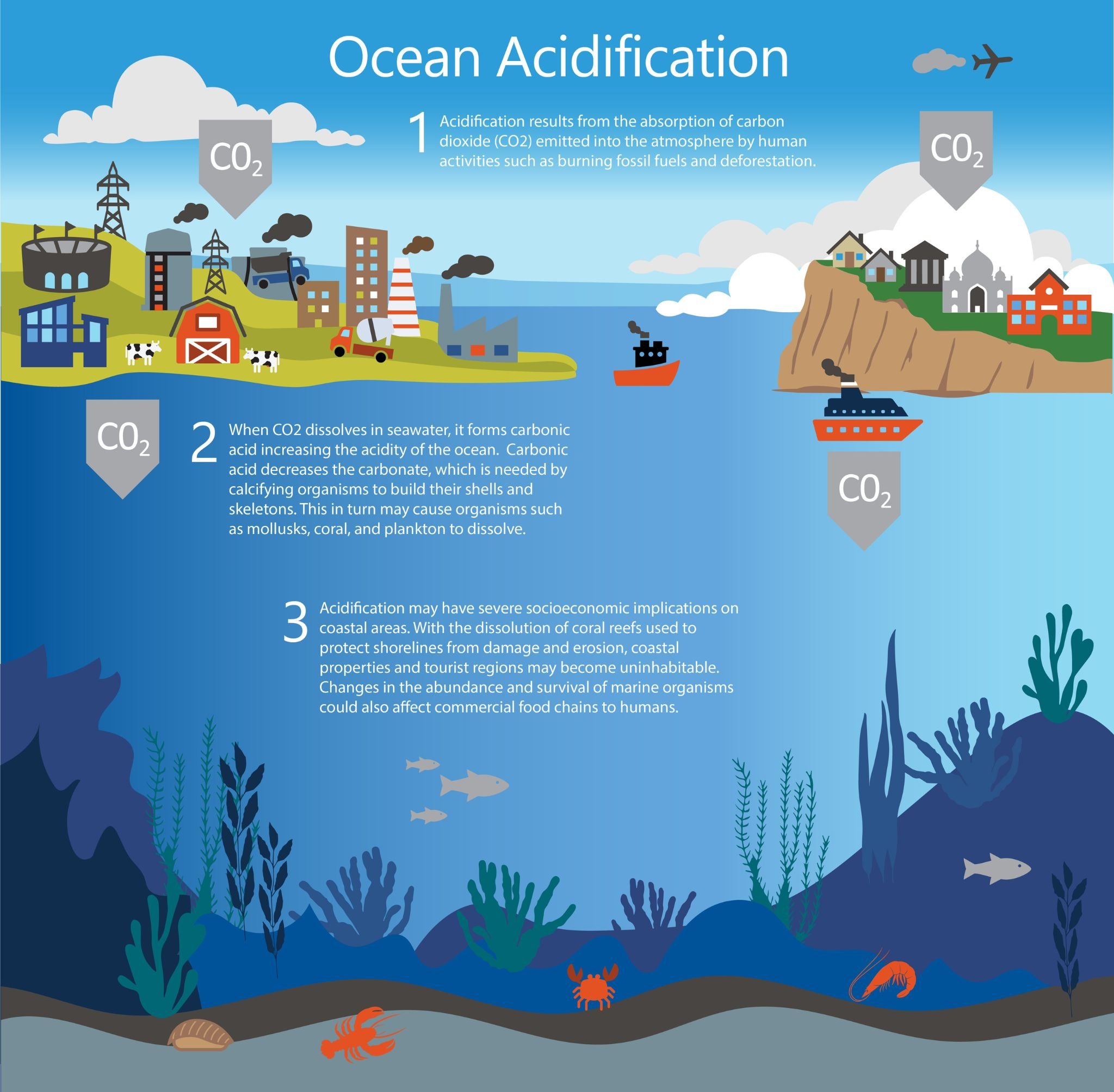On this World Oceans Day, we spread awareness on the issue of ocean acidification and its harmful effects on our waters. Acidification results from the absorption of carbon dioxide (CO2) emitted into the atmosphere by human activities such as burning fossil fuels and deforestation.
According to Smithsonian Ocean, one-quarter of the CO2 released by burning coal, oil, and gas dissolves into the ocean. Since the beginning of the industrial era in the mid-1800’s, scientists estimate that our oceans have absorbed between 1/3 and 1/2 of the CO2 humans have released.
When CO2 dissolves in seawater, it forms carbonic acid increasing the acidity of the ocean. This change has devastating effects on aquatic ecosystems. For one, carbonic acid decreases the carbonate, which is needed by calcifying organisms to build their shells and skeletons. This in turn may cause organisms such as mollusks, coral, and plankton to dissolve. Non-calcifying organisms are also put at risk, as increased acidity decreases the ability of some fish species to detect predators and find suitable habitats.
In addition, acidification may have severe socioeconomic implications on coastal areas. With the dissolution of coral reefs used to protect shorelines from damage and erosion, coastal properties and tourist regions may become uninhabitable. Changes in the abundance and survival of marine organisms could also affect commercial food chains to humans.
While reducing global greenhouse gas emissions remains the most effective approach to mitigate acidification, local action remains imperative to maintaining aquatic ecosystems. Herrera’s team continues to assist communities across the Pacific Northwest with sustainable solutions for addressing water quality and the effects of climate change. These efforts include monitoring and treating pollutants in runoff, climate forecasting, developing climate change resiliency plans, restoring coastlines, and protecting vulnerable marine ecosystems.
Though research and monitoring about acidification are just beginning, increased understanding and investments in climate change resiliency provide a hopeful glimpse into mitigation efforts to come.
